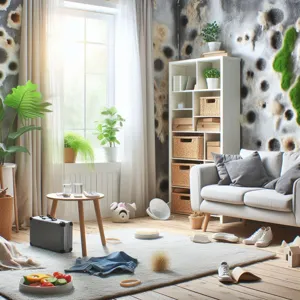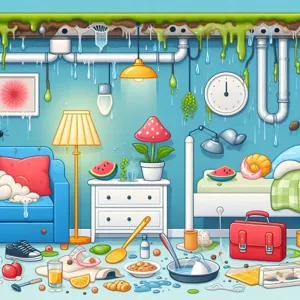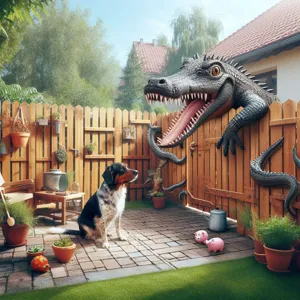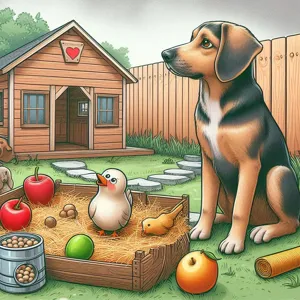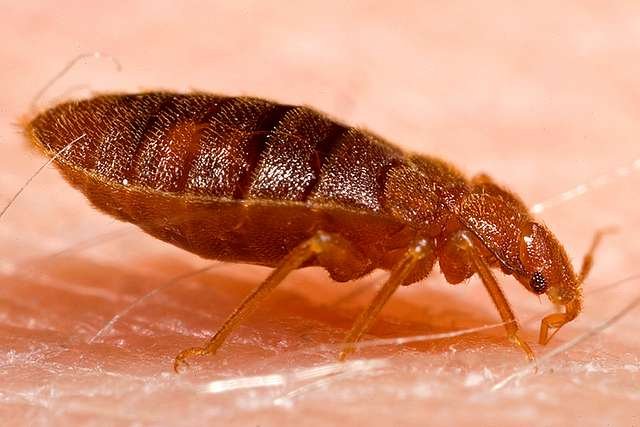Imagine gathering with family and friends under a starlit sky, the warm glow of a crackling fire providing both light and comfort as you share stories and laughter.
An outdoor fire pit not only enhances your backyard but also creates the perfect atmosphere for memorable evenings. Building your own fire pit can seem like a daunting task, but it doesn’t have to be! With just a few essential materials and a bit of creativity, you can create a cozy gathering spot that adds charm to your outdoor space. In this blog post, we’ll guide you through five easy steps to construct a simple yet stylish fire pit that will transform your backyard into an inviting oasis. Whether you’re roasting marshmallows or simply enjoying the warmth of the flames, this DIY project is sure to ignite your passion for outdoor living!
1. Introduction: Why Build Your Own Fire Pit?

### 1. Introduction: Why Build Your Own Fire Pit?
Imagine a warm evening under the starlit sky, the crackling sound of firewood, and the comforting glow of flames illuminating the faces of friends and family gathered around. An outdoor fire pit serves as more than just a source of heat; it becomes the heart of your backyard, a place where memories are forged, stories are shared, and laughter resonates long into the night. Building your own fire pit not only enhances your outdoor space but also offers numerous advantages that make it a worthwhile DIY project.
First and foremost, crafting your own fire pit allows you to customize it to fit your personal style and the aesthetic of your yard. Whether you envision a rustic stone circle, a modern metal design, or a classic brick structure, the possibilities are endless. This personalization not only adds charm to your outdoor area but also ensures that your fire pit complements your home’s architecture.
In addition to aesthetic benefits, constructing your own fire pit can save you a significant amount of money compared to purchasing a pre-made unit. With some basic materials and tools, you can create a functional and attractive fire pit that meets your needs without breaking the bank. Plus, there’s an undeniable satisfaction that comes from building something with your own hands—a sense of pride and accomplishment knowing that you created a space for cherished gatherings.
Furthermore, a DIY fire pit can serve as a catalyst for community and connection. It encourages outdoor living and provides the perfect backdrop for family barbecues, parties with friends, or quiet evenings spent with a favorite book and a cup of tea. By building your own fire pit, you’re not just investing in a feature for your yard; you’re creating an invitation for connection and relaxation.
In this blog post, we’ll take you through five easy steps to build your own simple outdoor fire pit. Whether you’re a seasoned DIY enthusiast or a beginner looking to dip your toes into home improvement, you’ll find that this project is both accessible and rewarding. So gather your materials, roll up your sleeves, and let’s get started on creating the perfect gathering spot for those unforgettable evenings around the fire!
2. Step 1: Choosing the Right Location
Choosing the right location for your outdoor fire pit is a crucial first step that sets the foundation for safe and enjoyable gatherings with family and friends. When selecting a spot, consider the layout of your yard, existing structures, and natural elements. Aim for a flat, even surface that’s away from overhanging branches, fences, or any flammable materials. A distance of at least 10 to 20 feet from your home and other structures is ideal to prevent the risk of sparks igniting anything nearby.
Take a moment to envision how you plan to use your fire pit. Do you want it nestled within a cozy seating area, surrounded by comfortable chairs and blankets for chilly evenings? Or perhaps you envision a more open space where guests can gather under the stars? Whichever setting you prefer, ensure it’s easily accessible for guests while also offering some level of privacy from neighbors.
Consider the prevailing wind direction as well. Positioning your fire pit in a way that the smoke drifts away from your seating area will enhance your comfort and enjoyment. Also, think about how the fire pit will look in relation to your garden or patio. A well-placed fire pit can become a stunning focal point, adding both charm and functionality to your outdoor space.
Lastly, check local regulations regarding fire pits, as some areas may have restrictions on where they can be placed or require certain safety measures. By thoughtfully choosing the right location, you’ll create a safe and inviting atmosphere that encourages countless memorable evenings spent around the warmth of your new fire pit.
3. Step 2: Gathering Your Materials

Gathering your materials is a crucial step in building your own outdoor fire pit, as it lays the foundation for a safe and enjoyable gathering space in your backyard. Before you head out to the hardware store, take a moment to consider the design and size of your fire pit. Are you envisioning a compact circular pit for intimate gatherings, or a larger square fire feature for bigger parties? This decision will influence the quantity and type of materials you’ll need.
Here’s a basic list to get you started:
1. **Fire Pit Ring**: You can choose from a variety of materials such as bricks, stones, or concrete blocks. These not only form the structure of your pit but also provide durability against heat. If you want a more polished look, consider purchasing a steel fire pit ring.
2. **Gravel or Sand**: This will serve as the foundation for your fire pit. A layer of gravel or sand helps with drainage and prevents moisture from accumulating at the bottom, which can impact the longevity of your fire pit.
3. **Firewood**: Depending on your pit’s design, you’ll need firewood or charcoal for fuel. Choose seasoned hardwoods like oak or maple for a longer burn time and less smoke.
4. **Outdoor Seating**: While not part of the fire pit itself, comfortable seating is essential for creating a welcoming atmosphere. Think about benches, adirondack chairs, or even a rustic log seating arrangement to complement your outdoor space.
5. **Safety Gear**: Don’t forget to equip yourself with safety gear! A sturdy pair of gloves, a shovel, and a bucket of water or a fire extinguisher are essential to ensure you’re prepared for any situation.
Once you have everything you need, you’ll be ready to move on to the next step of constructing your fire pit. With the right materials in hand, you can create a cozy and inviting outdoor space that will be the highlight of your backyard gatherings.
4. Step 3: Designing Your Fire Pit
Designing your fire pit is where the creative magic happens, allowing you to personalize your outdoor space while ensuring functionality and safety. Before diving into the construction phase, take a moment to visualize how your fire pit will fit into your yard’s overall aesthetic and layout. Consider the size and shape that best suits your needs—whether you prefer a cozy circular design for intimate gatherings or a square configuration for larger groups.
The materials you choose will play a significant role in the appearance and durability of your fire pit. If you’re going for a rustic look, natural stone or brick can blend beautifully with the surrounding landscape. Alternatively, sleek metal designs can bring a modern vibe to your outdoor area. Don’t forget to think about seating arrangements; integrating built-in benches or surrounding the fire pit with comfortable chairs can create an inviting atmosphere.
Next, think about the height of your fire pit. A raised design can help contain the flames and make it easier to cook over, while a lower pit can foster a more intimate setting. You might also want to incorporate decorative elements like colored glass stones, which can add a pop of color and enhance the flickering glow of the fire.
Be sure to consider safety features as well, such as a spark screen or a fire pit ring, which can keep the flames contained and minimize the risk of embers escaping. Lastly, sketch out your design, noting dimensions and materials, to ensure you have a clear blueprint to follow when it’s time to build. With a thoughtful design in place, you’ll be one step closer to crafting the perfect gathering spot for unforgettable evenings under the stars.
5. Step 4: Preparing the Site
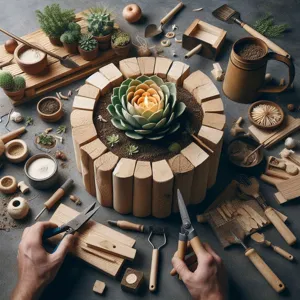
### Step 4: Preparing the Site
Now that you’ve gathered your materials and outlined where your fire pit will sit, it’s time to prepare the site for your backyard bonfire haven. This crucial step ensures that your fire pit is not only functional but also safe and aesthetically pleasing.
Begin by clearing the chosen area of any debris, grass, and rocks. Use a shovel to remove the top layer of soil, creating a level surface that is at least a few feet wider than the fire pit itself. This extra space allows for a buffer zone, which is essential for safety and helps prevent any stray embers from igniting nearby vegetation.
Next, consider the proximity of your fire pit to structures, trees, or anything flammable. Ideally, it should be located at least 10 to 15 feet away from any structures or overhanging branches. This distance minimizes risk and ensures that you can enjoy your fire without worry.
After you’ve established a clear and safe area, it’s time to lay down a foundation. Use gravel or sand to create a stable base. Spread a layer about 2 to 3 inches deep, leveling it out to provide an even surface. This foundation will not only help with drainage but also prevent weeds from growing around your fire pit, maintaining a clean look.
Finally, mark the perimeter of your fire pit with stakes and string, or simply use a garden hose to create a circular outline. This visual guide will help you when it’s time to set your stones or bricks in place, ensuring that your fire pit has a uniform shape and inviting appearance.
With the site prepared, you’re one step closer to creating your cozy outdoor retreat. In the next step, you’ll learn how to assemble your fire pit and bring your vision to life!
6. Step 5: Constructing the Fire Pit
### Step 5: Constructing the Fire Pit
Now that you’ve prepared your space and gathered your materials, it’s time for the most exciting part: constructing your fire pit! This step is where your vision transforms into reality, and you’ll soon have a cozy spot to gather around on chilly evenings.
**Start with the Base:** Begin by laying a sturdy foundation. If you opted for a stone or brick fire pit, arrange the first layer of bricks or stones in a circle, ensuring they are level and stable. This will be the base of your fire pit, so take your time to ensure everything is aligned properly. A well-laid foundation will provide durability and safety for your fire pit.
**Build Upward:** Once your base is secure, continue stacking additional layers of bricks or stones. Depending on the height you desire, you can build your fire pit anywhere from two to four layers tall. As you stack, use a masonry adhesive between layers to prevent shifting and ensure a secure hold. For added flair, consider alternating the brick pattern to create a more visually appealing design.
**Create a Fire Ring:** To enhance safety, line the inside of your fire pit with fire-resistant materials. This can be done with fire bricks or a metal fire ring. These materials not only provide additional protection to the surrounding area, but they also help to contain the fire and radiate heat more effectively.
**Finishing Touches:** After constructing the main structure, take a step back and assess your work. You can customize your fire pit further by adding decorative stones, pebbles, or even a seating area around it. If you like, incorporate features such as benches or log seating to make your fire pit the perfect gathering spot for friends and family.
**Prepare for the Fire:** Finally, once all the construction is complete, clear out any debris from the inside of the fire pit. You can create a small bed of sand or gravel at the bottom to improve drainage and provide an even surface for your fire. Now, you’re ready to light your first fire and enjoy the warmth and ambiance of your new outdoor oasis!
With your fire pit constructed, you’ve not only added a functional feature to your backyard but also created a charming centerpiece for gatherings, storytelling, and s’mores-making adventures under the stars. Enjoy the cozy evenings ahead!
7. Safety Precautions to Consider

When it comes to building your own outdoor fire pit, safety should always take precedence. A cozy fire is a wonderful addition to your backyard, but ensuring that it’s safe for you, your family, and your property is essential. Here are some crucial safety precautions to consider before you light your first flame.
**1. Choose the Right Location:** Before you begin construction, select a location that is a safe distance from any structures, trees, or overhanging branches. A minimum of 10 to 15 feet away from your home, fences, and other flammable materials is ideal. Opt for a flat, stable surface to prevent any potential accidents.
**2. Use Fire-Resistant Materials:** Whether you’re using bricks, stones, or metal, make sure to select fire-resistant materials specifically designed for high temperatures. Avoid using treated wood, as it can release harmful chemicals when burned.
**3. Have a Fire Extinguisher Handy:** Always keep a fire extinguisher nearby or a bucket of sand or water to extinguish any flames quickly if they get out of hand. Familiarize yourself with how to use it before you start your fire.
**4. Monitor Wind Conditions:** Wind can quickly turn a small, contained fire into a larger, uncontrollable blaze. On windy days, consider postponing your fire pit gatherings to avoid potential hazards. Always check the weather forecast before lighting up.
**5. Supervise the Fire:** Never leave your fire unattended, especially if children or pets are around. Maintain a safe circle around the fire pit and educate your family about the importance of keeping a safe distance. When you’re finished enjoying the fire, make sure to completely extinguish it before leaving the area.
By taking these essential safety precautions, you can enjoy the warmth and ambiance of your DIY fire pit without worry. Remember, a little preparation goes a long way in ensuring a safe and enjoyable experience for everyone. Happy building!
8. Tips for Fire Pit Maintenance
Once you’ve constructed your outdoor fire pit, it’s essential to keep it in good condition to ensure safe and enjoyable use for years to come. Regular maintenance not only enhances the longevity of your fire pit but also keeps it looking great in your backyard.
**1. Clean Regularly:** After each use, make it a habit to clean your fire pit. Remove ashes and leftover debris using a metal shovel or a vacuum designed for ashes. Allowing ashes to accumulate can lead to rusting or damage, especially in metal fire pits. A clean fire pit also promotes better airflow for future fires.
**2. Check for Damage:** Regularly inspect your fire pit for any signs of wear and tear. Look for cracks, rust, or loose stones, especially after heavy use or inclement weather. Addressing these issues promptly can prevent more extensive damage down the line. For stone or brick fire pits, ensure that the mortar is intact and repair any gaps that appear.
**3. Protect from the Elements:** If your fire pit is made of metal, consider using a cover when it’s not in use. This will protect it from rain, snow, and harsh sun, which can lead to rust or fading. For stone or brick fire pits, a cover can help keep out debris and prevent moisture buildup, which can freeze and crack the structure.
**4. Use the Right Fuel:** To prolong the life of your fire pit, be mindful of the materials you burn. Avoid using treated wood, plastics, or other materials that can create harmful smoke and residue. Instead, opt for seasoned hardwoods, which burn cleaner and produce less ash.
**5. Seasonal Maintenance:** At the end of each season, conduct a thorough inspection and cleaning. This is an ideal time to perform any necessary repairs, apply sealants if needed, and prepare your fire pit for winter. If you live in an area with heavy snowfall, consider covering the pit or storing removable components indoors to protect them from freezing temperatures.
By following these maintenance tips, your outdoor fire pit will remain a cozy gathering spot for friends and family, allowing you to create lasting memories around the warmth of the fire. Enjoy your DIY delight and the comfort it brings to your outdoor space!
9. Enhancing Your Fire Pit Area with Seating
Once you’ve constructed your outdoor fire pit, it’s time to elevate the experience by creating a comfortable and inviting seating area. After all, what’s a cozy fire without a perfect spot to relax and enjoy it? Here are some tips to enhance your fire pit area with seating that complements your newly built centerpiece.
**Choose the Right Seating:** Consider the number of guests you typically host around your fire pit and select seating that accommodates them without feeling cramped. Options range from rustic wooden benches and Adirondack chairs to chic, modern outdoor sofas. Ensure that your seating is durable and weather-resistant to withstand the elements, or choose cushions that can be easily stored away when not in use.
**Create a Circular Arrangement:** For optimal interaction and ambiance, arrange your seating in a circular or semi-circular pattern around the fire pit. This setup allows everyone to enjoy the warmth of the fire while fostering conversation and connection. To enhance the visual appeal, consider using different heights and styles of seating for added interest.
**Incorporate Soft Textiles:** To make your seating area cozier, add outdoor cushions and throw blankets. Not only do they provide extra comfort, but they also allow you to infuse color and personality into your space. Choose fabrics that are fade-resistant and easy to clean, ensuring they remain vibrant throughout the seasons.
**Add Ambient Lighting:** To set the mood for those evening gatherings, think about incorporating soft ambient lighting. String lights draped overhead, lanterns placed strategically, or even solar-powered garden lights can create a magical atmosphere. Lighting not only enhances safety but also adds charm to your fire pit area after the sun sets.
**Personalize with Accessories:** Lastly, make the space your own by incorporating personal touches. Think about adding a small side table for snacks and drinks, decorative elements like outdoor rugs, or even a small firewood holder to keep your supplies within reach. Potted plants or flower arrangements can also soften the area and integrate it beautifully into your garden or patio landscape.
By thoughtfully designing your seating area around the fire pit, you create an inviting outdoor retreat that encourages relaxation, storytelling, and cherished moments with family and friends. Your fire pit will not only be a source of warmth but a gathering place where memories are made under the stars.
10. Adding Lighting for Ambiance
Adding lighting for ambiance is the finishing touch that transforms your outdoor fire pit area into a magical retreat, perfect for gatherings under the stars or cozy evenings spent with loved ones. After all, a fire pit isn’t just about the warmth; it’s about creating an inviting atmosphere that encourages conversation and relaxation.
Begin by considering the various lighting options that complement your fire pit. String lights are a popular choice, draping gracefully overhead to cast a warm, twinkling glow across your space. They can be easily hung from nearby trees, a pergola, or even simple posts anchored in the ground. Choose warm white or soft yellow bulbs to harmonize with the flickering flames of your fire pit.
For a more grounded approach, consider installing solar-powered path lights or lanterns around the perimeter of your seating area. These not only illuminate the ground for safety but also add a charming, rustic feel to your outdoor setup. Opt for designs that reflect your personal style—whether that’s sleek and modern or whimsical and vintage.
If you’re feeling a bit more adventurous, incorporate LED color-changing lights that can be adjusted to match the mood of the evening. Imagine transitioning from a soft blue glow for a calm, serene night to vibrant reds and oranges that mirror the fire’s own hues during a lively gathering.
Don’t forget to layer your lighting. Combine different sources—like wall sconces, recessed lighting, or even candles placed strategically around your fire pit—to create depth and a sense of intimacy. Remember, the goal is to enhance the natural beauty of your outdoor space, not overpower it.
With the perfect lighting, your fire pit area will not only serve as a functional feature but also as a stunning focal point that beckons friends and family to gather, share stories, and create lasting memories under the night sky. So, grab your tools and get creative—your outdoor oasis awaits!
11. Fun Fire Pit Activities and Recipes
Once your outdoor fire pit is complete, the real fun begins! A fire pit serves not only as a cozy gathering place but also as the perfect backdrop for a variety of engaging activities and delicious culinary adventures. Here are some enjoyable fire pit activities and mouthwatering recipes to elevate your outdoor experience.
**1. S’mores Galore:** No fire pit gathering is complete without the classic s’mores! Gather graham crackers, marshmallows, and chocolate bars, and let your guests roast marshmallows to golden perfection. You can even get creative by introducing flavored marshmallows or adding slices of fruit like strawberries or bananas for a twist on the traditional recipe.
**2. Campfire Stories:** As the flames flicker and crackle, encourage everyone to share their favorite campfire stories or ghost tales. This is a wonderful way to bond with family and friends, creating lasting memories around the warmth of the fire. You might even want to designate a “storyteller” for the night, complete with a cozy blanket and a comfy seat by the fire.
**3. Fire Pit Cooking:** Embrace the culinary possibilities that a fire pit offers. Skewers of marinated vegetables, chicken, or beef can be grilled over the open flame. Alternatively, try your hand at cooking a pizza on a cast-iron skillet or even wrapping dough around a stick to create delicious bread rolls. The aroma of freshly cooked food mingling with the scent of burning wood is simply irresistible!
**4. Stargazing:** After indulging in tasty treats, take advantage of the night sky. Lay out some blankets, snuggle up, and gaze at the stars. This is an excellent opportunity to teach kids about constellations or simply enjoy the peaceful ambiance. Enhancing your fire pit area with comfortable seating and soft lighting can create an inviting atmosphere for stargazing.
**5. Fire Pit Games:** Keep the fun going with some light-hearted games. Classic options like charades or card games are always a hit. You can even invent your own fire pit trivia game, where everyone takes turns asking questions about pop culture, history, or shared memories. This interactive element adds a lively spirit to your gathering and ensures everyone is engaged and having a blast.
With these activities and recipes, your outdoor fire pit will become the heart of your gatherings, bringing friends and family together for unforgettable evenings filled with laughter, warmth, and delicious food. So gather your supplies, ignite that fire, and prepare for an evening of fun and connection under the stars!
12. Conclusion: Enjoying Your DIY Fire Pit
Congratulations! By following our simple steps, you’ve transformed your backyard into a cozy haven with your very own DIY outdoor fire pit. Now that you’ve put in the effort to build this inviting centerpiece, it’s time to fully embrace the joy and warmth it brings.
Imagine gathering around the flickering flames with family and friends, the soft glow illuminating their faces as laughter fills the air. Your fire pit becomes more than just a structure; it’s a gathering place where stories are shared, s’mores are toasted, and memories are made. As the sun sets and the stars begin to twinkle overhead, the crackling fire invites you to slow down and savor the moment.
To enhance the experience, consider adding some comfortable seating around your fire pit—think cozy chairs, cushions, or even a rustic log bench. String lights overhead can create a magical ambiance, while blankets nearby ensure warmth on cooler nights. Don’t forget to stock up on firewood or your favorite fire pit fuel, along with some roasting sticks for marshmallows or hot dogs.
As you enjoy your new outdoor sanctuary, remember to prioritize safety. Keep a bucket of water or a fire extinguisher nearby, and always supervise children and pets around the fire. With safety measures in place, you can relax and take in the beauty of your handiwork.
Your DIY fire pit is not just a source of heat; it’s a place of connection and relaxation. So grab a drink, gather your loved ones, and let the flames dance as you celebrate your accomplishment. Here’s to many warm evenings spent around your fire pit, creating cherished memories for years to come!
13. Resources for Further Reading
### Resources for Further Reading
Building your own outdoor fire pit is not only a rewarding DIY project but also an opportunity to enhance your outdoor living space. If you’re eager to delve deeper into the world of fire pits, there are numerous resources available that can provide you with guidance, inspiration, and practical tips. Here are some excellent materials to help you expand your knowledge and ensure your fire pit project is a roaring success:
1. **Books**: Consider picking up a copy of “The Complete Guide to Building Your Own Outdoor Fire Pit” by D. M. Smith. This book offers step-by-step instructions tailored for beginners, complete with diagrams and safety tips. Another great read is “The Backyard Fire Pit Book” by Jamie McDonald, which explores various fire pit designs and the materials needed for each.
2. **Online Guides and Tutorials**: Websites like DIY Network and Home Depot feature extensive tutorials on building fire pits, complete with video demonstrations. These resources often include material lists, budgeting tips, and maintenance advice that can be invaluable as you embark on your project.
3. **YouTube Channels**: For those who prefer visual learning, YouTube is a treasure trove of DIY fire pit videos. Channels like “Home Repair Tutor” and “Fix This Build That” showcase real-time builds and offer practical advice from experienced DIYers. Watching these videos can provide you with a clearer understanding of the process and potential challenges.
4. **Local Workshops**: Many home improvement stores or community centers offer workshops on outdoor projects, including fire pits. Participating in one of these hands-on sessions can give you direct access to expert advice, and you may even meet fellow DIY enthusiasts to share tips and ideas.
5. **Online Forums and Communities**: Websites like Reddit or specialized DIY forums can connect you with a community of fellow DIYers. You can ask questions, share your progress, and gain insights from those who have successfully built their own fire pits.
With these resources at your fingertips, you’ll not only feel more confident in your ability to create a beautiful outdoor fire pit but also foster a deeper appreciation for the craft of DIY. So gather your materials, arm yourself with knowledge, and get ready to enjoy cozy evenings by the fire!
14. Share Your DIY Fire Pit Experience!
After you’ve completed your outdoor fire pit project, the fun doesn’t have to stop there—it’s time to share your DIY experience with others! Documenting and sharing your journey not only celebrates your hard work but also inspires fellow DIY enthusiasts and outdoor lovers. Start by snapping some high-quality photos of your finished fire pit from various angles, capturing the warmth and ambiance it brings to your backyard.
Consider creating a blog post detailing your step-by-step process, including the challenges you faced, the materials you used, and any helpful tips you discovered along the way. Sharing your personal insights can provide valuable guidance to others who are looking to embark on a similar project.
Social media is another fantastic platform for sharing your experience. Post your photos, along with a short description of your project, using hashtags like #DIYFirePit or #OutdoorLiving to reach a broader audience. Engage with your followers by asking for their thoughts or their own DIY stories.
If you’re part of any local or online DIY communities, don’t hesitate to share your fire pit project there as well. Many DIY enthusiasts love to see what others are creating, and your experience could spark new ideas for someone else’s project.
Lastly, consider hosting a gathering around your new fire pit. Invite friends and family over for a cozy evening of storytelling, marshmallow roasting, and laughter. This not only allows you to showcase your creation but also creates lasting memories that you can share in your future posts. By sharing your DIY fire pit experience, you not only celebrate your achievement but also contribute to a community of creatives eager to learn and grow together.
We hope you found our guide on building your own simple outdoor fire pit both informative and inspiring! There’s something truly special about gathering around a crackling fire under the stars, and now you have the tools to create that perfect space in your backyard. By following these five easy steps, you can enjoy cozy evenings with family and friends, share stories, roast marshmallows, and create lasting memories. So gather your materials, unleash your creativity, and get ready to transform your outdoor space into a warm and inviting retreat. Happy building, and may your new fire pit bring you countless nights of joy and relaxation!

